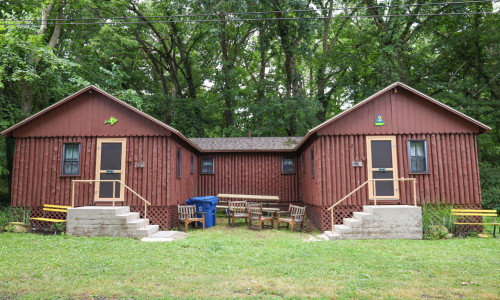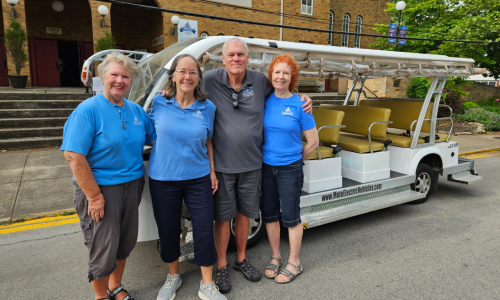Staff Blogger: Sarah Brunot, Environmental Intern
There’s no time like this year to update your cottage to sustainability standards. It’s common for many people to worry about the upfront costs associated with making environmental improvements to their cottage, however, in the long run, these changes may even provide profits.
Two members of the Lakeside Environmental Stewardship Society (LESS) have illustrated sustainable cottage practices on both newly built and older cottages.
Frank Baker’s cottage, named “The Lakeside Green Cottage,” exhibits the intersection of architecture and sustainability. The cottage was crushed by a tree in June 2009, and Baker decided to rebuild his cottage more sustainably and better than before.
He improved it by applying various insulation measures and adapting an efficient ventilation system. Click here to learn more about Baker’s journey in building “The Lakeside Green Cottage.”
Bill Smith also owns a sustainable cottage in Lakeside, however he added numerous features as opposed to building from scratch.
Smith formerly designed coal powered boilers for powerplants, so now he is motivated to counteract his carbon footprint.
Below is a list of techniques and tips inspired by Baker and Smith on how to make a Lakeside cottage (or any home) more sustainable.
Improve insulation: A cottage with good insulation provides environmental benefits, as less energy is used. In addition, the less energy used will result in financial benefits and reduced energy bills.
- Replace any drafty/inefficient windows with high performance windows. Tip: Windows account for 50% or more of energy loss; high performance windows will not only limit the energy loss, but also reduce sun fading and reduce outside noise.
- Inject walls with a water-based foam. Tip: Water-based foam is much easier to work with, as it does not expand to the same extent as other foams, and the cleanup is much easier. Injecting this foam into the walls is perfect for those looking to add installation without rebuilding the house. For a smaller project, this foam can be injected in areas surrounding outlets where there is poor insulation.
- Use expanded polystyrene or EPS, a foam material with special structural properties that allow it to be light and support many times its own weight. Tip: EPS is one of the least expensive insulation materials on the market, so it’s perfect for big cottage renovations. Make an “insulation sandwich” with two sheets of structural oriented strand board (OSB) with EPS in the center – this will result in a panel that can be used for walls and roofs, allowing them to be installed in one step.
Install solar panels: While they’re often viewed as difficult to install and very expensive, Smith explained that a crew came and installed his solar panels in under 5 hours. In addition, he received a 30% tax credit for installing the panels, paid no money down, and for a few months had a negative utility bill.
- Old roofing can be unreliable to hold solar panels, however Power Home Solar (the company Smith used) provides a package deal to update roofing in addition to installing solar panels. The tax credit will apply to any work that Power Home Solar does on the roof, provided it’s related to solar energy. Tip: If you’re considering switching to solar power, don’t delay. The tax credit is set to continue decreasing every year for the next few years until it reaches 0%.
- Due to the lush tree canopy in Lakeside, it can be hard to get full efficiency out of the solar panels. Don’t let this be discouraging. Despite the trees, Smith still had multiple negative electric bills. In addition, he was able to reduce CO2 emissions by 4664.36 lbs, which is equivalent to planting 35.25 trees.
- If solar panels seem like too much of an upfront cost, another option is a cool roof. A cool roof ultimately reflects sunlight instead of the heat being absorbed into the house, and this can lead to major reductions on cooling bills.
Purchase energy efficient appliances: Nearly 50% of energy used in a typical home comes from appliances. Tip: Print out this list for buying/using appliances (refrigerator, dishwasher, stove/oven and air conditioner) to keep around the house and achieve maximum efficiency.
Use LED lighting: By simply switching to the more efficient LED bulbs (as current ones burn out) you will have the potential to save money, as well as reducing your carbon footprint.




